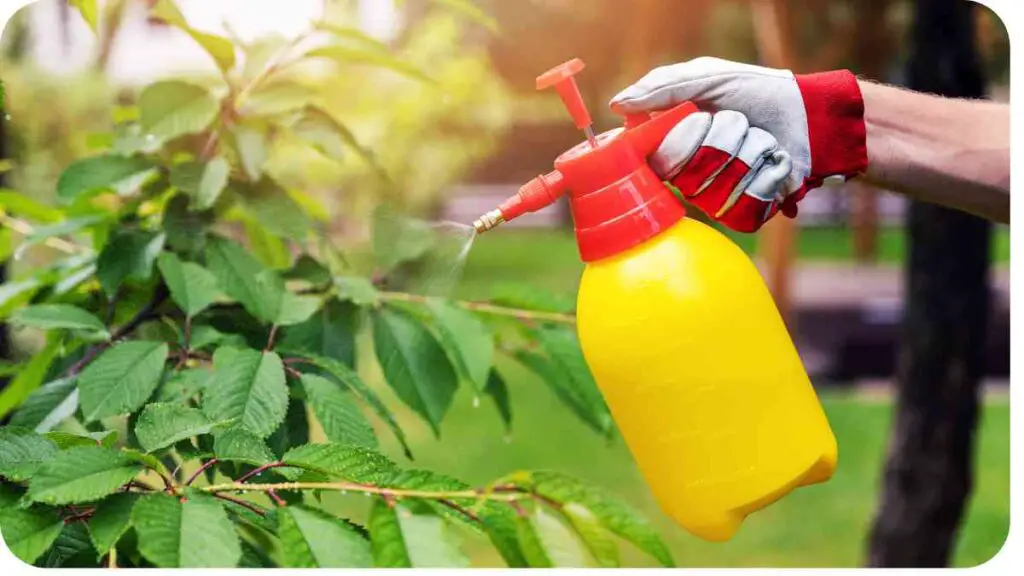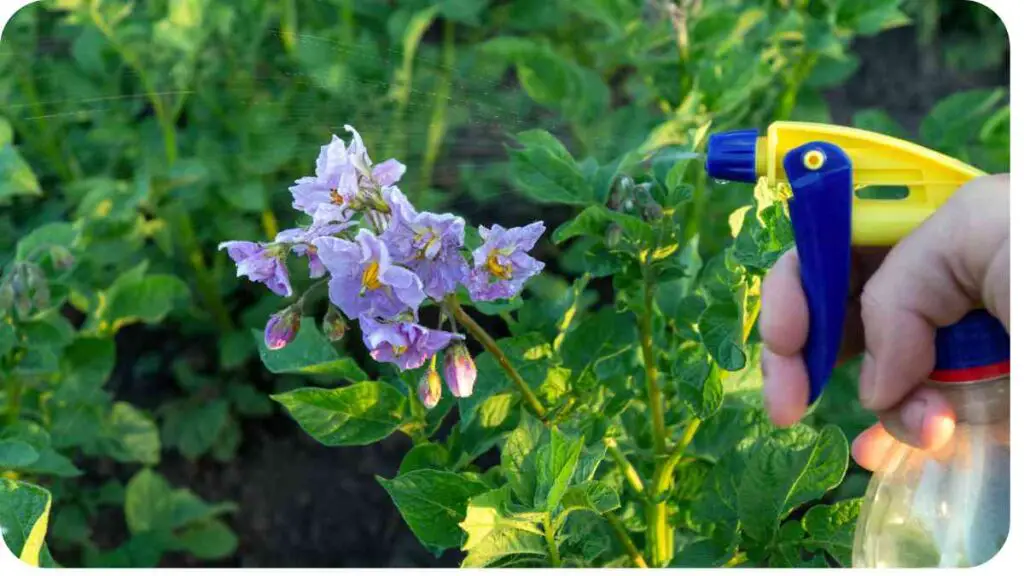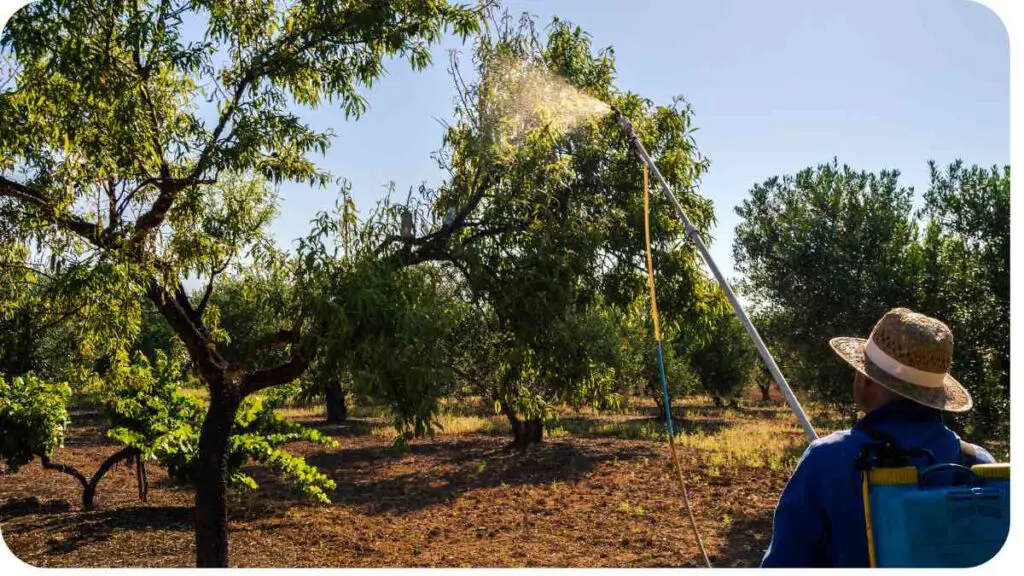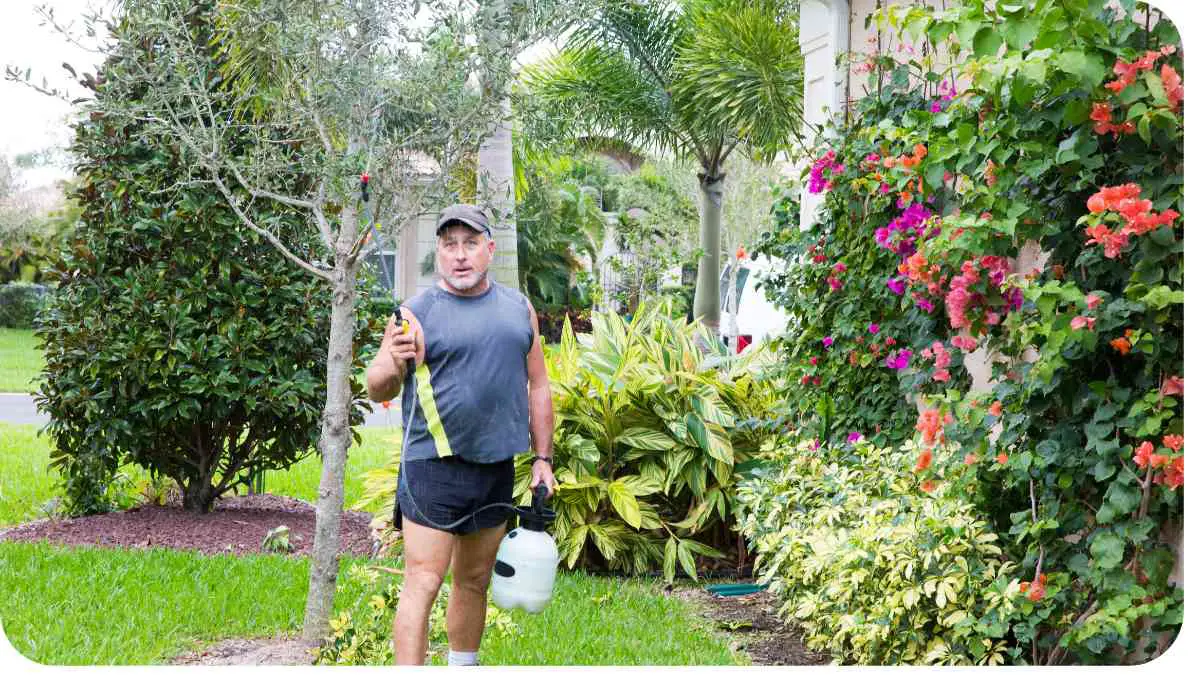Maintaining healthy trees is essential for the well-being of our environment and the beauty of our landscapes. However, trees can fall victim to various diseases, which can weaken or even kill them if left untreated.
In this comprehensive guide, we’ll explore common tree diseases, their causes, symptoms, and most importantly, how to identify and treat them effectively.
| Key Takeaways |
|---|
| 1. Learn to identify symptoms of common tree diseases. |
| 2. Understand the differences between fungal, bacterial, viral, and non-infectious tree diseases. |
| 3. Diagnose tree diseases accurately to implement effective treatment. |
| 4. Treat fungal diseases with pruning, fungicides, and proper tree care. |
| 5. Manage bacterial diseases through pruning, antibiotic treatments, and sanitation. |
| 6. Prevent viral diseases by choosing resistant varieties and practicing good sanitation. |
| 7. Address non-infectious diseases by improving environmental conditions and tree care practices. |
| 8. Adopt holistic tree care practices to promote overall tree health and resilience. |
| 9. Consult with certified arborists for professional diagnosis and treatment recommendations. |
2. Understanding Common Tree Diseases

Tree diseases can be broadly categorized into fungal, bacterial, viral, and non-infectious diseases. Each type presents its own set of challenges and requires specific approaches for diagnosis and treatment. Let’s delve into each category to gain a better understanding.
When facing irrigation woes, it’s crucial to troubleshoot systematically. Check for leaks, blockages, or misalignments common irrigation system problems to ensure optimal watering efficiency and plant health.
3. Fungal Tree Diseases
Fungal tree diseases are among the most prevalent and damaging. They often manifest as leaf spots, wilting, cankers, or unusual growths on the tree’s trunk. Below is a table outlining some common types of fungal tree diseases and their characteristics:
| Fungal Tree Disease | Symptoms |
|---|---|
| Anthracnose | Leaf spots, defoliation, twig dieback |
| Dutch Elm Disease | Wilting, yellowing leaves, tree death |
| Powdery Mildew | White powdery patches on leaves |
| Armillaria Root Rot | Mushroom growth at the base of the tree |
4. Bacterial Tree Diseases

While less common than fungal diseases, bacterial tree diseases can still pose significant threats to tree health. These diseases often spread through open wounds or insect vectors. Here are some examples of bacterial tree diseases along with their symptoms:
Garden pests can wreak havoc if left unchecked. Employ natural remedies, traps, or barriers tips and tricks to deter invaders and safeguard your plants, promoting a thriving garden ecosystem.
| Bacterial Tree Disease | Symptoms |
|---|---|
| Fire Blight | Wilting, blackened leaves, scorched appearance |
| Bacterial Leaf Scorch | Browning of leaf margins, leaf drop |
| Crown Gall | Tumor-like growths on stems and branches |
| Bacterial Wetwood | Foul-smelling ooze from trunk or branches |
5. Viral Tree Diseases
Viral tree diseases are caused by pathogens that invade tree cells, disrupting their normal functions. Symptoms can vary widely depending on the virus and the tree species affected. Here’s a table highlighting some common symptoms of viral tree diseases:
| Symptom | Description |
|---|---|
| Leaf Mottling | Irregular patterns of discoloration on leaves |
| Stunted Growth | Reduced size or vigor of the tree |
| Leaf Curling | Abnormal curling or distortion of leaves |
| Yellowing of Leaves | Loss of green coloration, often accompanied by leaf drop |
6. Non-Infectious Tree Diseases
Not all tree diseases are caused by pathogens. Non-infectious tree diseases can result from environmental factors, nutritional deficiencies, or physical damage. Understanding these diseases is crucial for effective management. Here’s a table outlining some common causes and symptoms:
| Cause | Symptoms |
|---|---|
| Environmental Stress | Leaf scorch, premature leaf drop |
| Nutrient Deficiencies | Yellowing leaves, stunted growth |
| Mechanical Damage | Bark wounds, dieback of branches |
| Air Pollution | Leaf burn, abnormal growth patterns |
7. Diagnosing Tree Diseases
Accurate diagnosis is the first step towards effective treatment. When dealing with tree diseases, it’s essential to carefully examine the tree’s symptoms, consider environmental factors, and sometimes conduct laboratory tests. Here are some key steps in diagnosing tree diseases:
- Visual Inspection: Carefully examine the tree for any signs of discoloration, wilting, abnormal growths, or other unusual symptoms.
- Symptom Analysis: Note the specific symptoms exhibited by the tree, as different diseases may cause similar symptoms.
- Environmental Assessment: Consider factors such as soil conditions, moisture levels, and exposure to sunlight, as these can influence disease development.
- Laboratory Tests: In some cases, laboratory tests may be necessary to identify the pathogen responsible for the disease.
Proper drainage is vital for a healthy garden environment. Address issues like pooling water or soil erosion common issues and fixes to prevent root rot and maintain optimal growing conditions for your plants.
8. Treating Fungal Tree Diseases
Treating fungal tree diseases often requires a combination of cultural, chemical, and biological methods. Here are some common treatment options for fungal tree diseases:
| Treatment | Description |
|---|---|
| Pruning | Removing infected branches to prevent the spread of the disease |
| Fungicides | Application of fungicidal sprays to control fungal pathogens |
| Proper Tree Care | Maintaining optimal soil moisture and providing adequate nutrition |
| Biological Control | Introduction of beneficial microorganisms to suppress fungal growth |
9. Managing Bacterial Tree Diseases
Managing bacterial tree diseases can be challenging due to their systemic nature. However, there are several strategies that can help mitigate their impact:
| Strategy | Description |
|---|---|
| Pruning | Prune affected branches to reduce disease spread |
| Antibiotic Treatments | Application of antibiotics to control bacterial infections |
| Sanitation | Remove and destroy infected plant material to prevent spread |
| Cultural Practices | Promote tree health through proper irrigation and fertilization |
10. Preventing Viral Tree Diseases

Prevention is often the most effective approach when it comes to viral tree diseases, as there are limited treatment options available. Here are some tips for preventing viral tree diseases:
A leaking sprinkler head can waste water and damage your landscape. Learn how to troubleshoot and repair these issues, ensuring efficient irrigation and preserving the beauty of your outdoor space.
| Prevention Tip | Description |
|---|---|
| Plant Resistant Varieties | Choose tree species that are less susceptible to viral infections |
| Sanitation | Practice good sanitation by removing and disposing of infected plant material |
| Vector Control | Manage insect vectors that can spread viral pathogens |
| Pruning | Regularly prune trees to remove infected branches and promote air circulation |
11. Addressing Non-Infectious Tree Diseases
Non-infectious tree diseases often stem from environmental stressors or poor cultural practices. Addressing these issues can help prevent and manage non-infectious diseases effectively:
| Method | Description |
| Environmental Management | Improve soil quality, adjust irrigation, and reduce pollution |
| Nutrient Management | Correct nutrient deficiencies through fertilization |
| Tree Care Practices | Implement proper pruning, mulching, and watering techniques |
| Pest Control | Manage pests that can cause mechanical damage to trees |
12. Holistic Tree Care Practices
In addition to addressing specific diseases, adopting holistic tree care practices can enhance overall tree health and resilience. Here are some holistic approaches to consider:
- Mulching: Apply mulch around the base of trees to conserve moisture, suppress weeds, and improve soil structure.
- Aeration: Ensure proper aeration of the soil to facilitate root growth and nutrient uptake.
- Compost Tea: Use compost tea as a natural fertilizer to promote beneficial soil microorganisms.
- Tree Inspections: Regularly inspect trees for signs of disease, pest infestation, or other issues that may impact their health.
Yellow leaves on your plants could indicate various underlying issues. Identify the cause and implement appropriate solutions comprehensive solution to revive your greenery and promote vibrant, healthy foliage.
13. Conclusion
Maintaining the health of trees is vital for preserving our environment and enhancing the beauty of our surroundings. By understanding the common tree diseases and implementing appropriate management strategies, we can protect our trees from harm and ensure their longevity. Remember to diagnose tree diseases accurately, treat them promptly, and adopt holistic tree care practices to promote overall tree health.
15. FAQs
Q: How can I tell if my tree is diseased?
A: Look for symptoms such as leaf discoloration, wilting, abnormal growths, or dieback. Conduct a visual inspection and consider environmental factors.
Q: Can I treat tree diseases myself?
A: While some minor diseases can be treated with cultural practices, severe infections may require professional intervention. Consult with a certified arborist for accurate diagnosis and treatment recommendations.
Q: How can I prevent tree diseases in my landscape?
A: Choose disease-resistant tree species, practice good sanitation, maintain proper tree care practices, and address environmental stressors promptly.
Q: Are there organic methods for treating tree diseases?
A: Yes, organic methods such as pruning, compost tea applications, and biological control agents can help manage tree diseases without synthetic chemicals.
Q: What should I do if my tree shows signs of disease?
A: Contact a certified arborist for a thorough evaluation and treatment plan. Prompt action can help prevent further spread of the disease and preserve the health of your tree.
Further Reading
Indigo Surveys – Tree Disease Symptoms: Explore comprehensive information on symptoms of various tree diseases.
https://eos.com/blog/tree-diseases/ Learn about common tree diseases and their management techniques from expert insights.
UAEX – Tree Disease Problems: Access resources and guides on identifying and addressing tree disease problems.
FAQs
How can I tell if my tree is diseased?
Look for symptoms such as leaf discoloration, wilting, abnormal growths, or dieback. Conduct a visual inspection and consider environmental factors.
Can I treat tree diseases myself?
While some minor diseases can be treated with cultural practices, severe infections may require professional intervention. Consult with a certified arborist for accurate diagnosis and treatment recommendations.
How can I prevent tree diseases in my landscape?
Choose disease-resistant tree species, practice good sanitation, maintain proper tree care practices, and address environmental stressors promptly.
Are there organic methods for treating tree diseases?
Yes, organic methods such as pruning, compost tea applications, and biological control agents can help manage tree diseases without synthetic chemicals.
What should I do if my tree shows signs of disease?
Contact a certified arborist for a thorough evaluation and treatment plan. Prompt action can help prevent further spread of the disease and preserve the health of your tree.

Hi! My name is Hellen James, and I’m here to help you with your home-maintenance needs. Whether it’s building a better yard or just trying to fix a garden—I can show you how.


